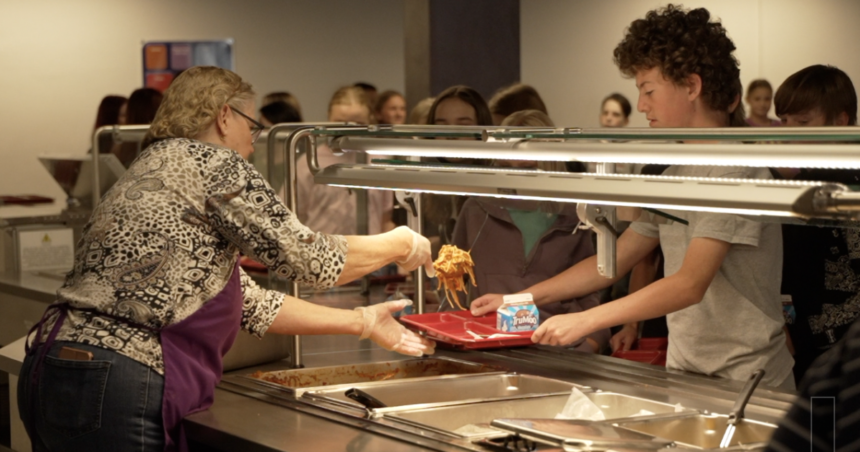BUTTE — We all know someone who can get really grumpy when they’re “hangry”, right?
Now, picture being in a school full of kids who are food insecure and may not have access to school lunch. Well, the Butte School District has found a solution by enrolling several schools in a free lunch program funded by the US Department of Education.
At 11:07 a.m., seventh-graders rush into the lunchroom after the bell rings. While some bring lunches from home, most line up for hot lunch options.
“I’m having pizza, Jell-O, chips, and chocolate milk,” says Bridger Stearns, a seventh grader at East Middle School. “It’s a good refresher and helps with focus in school.”
Stearns is one of over 250 middle schoolers enjoying a meal at East Middle School, all free of charge this year, thanks to the USDA’s meal service option for schools in low-income areas.
“There have been times when we noticed a child not eating because they were worried about their bill. It’s great to see everyone eat without that concern,” says Lacy Garcia, a cook at East Middle School.
“It’s a big deal for our kids; many are hungry. With a lot of poverty in the town, adding more schools to the program definitely helps our community and families,” says Kurt Marthaller, the director of central services for the Butte School District.
Marthaller and his team secured funding for three additional schools, including Whittier Elementary School, Butte High School, and East, bringing the total to seven schools in Butte School District #1 receiving the Community Eligibility Program from the USDA.
According to the USDA’s website, the Community Eligibility Provision (CEP) provides free meal service for breakfast and lunch for schools in low-income areas:
CEP allows the nation’s highest poverty schools and districts to serve breakfast and lunch at no cost to all enrolled students without collecting household applications. Instead, schools that adopt CEP are reimbursed using a formula based on the percentage of students categorically eligible for free meals based on their participation in other specific means-tested programs, such as SNAP and TANF.
Marthaller notes that despite being new at East, the program is feeding more children daily, and Principal Keith Miller anticipates the positive impact seen during the pandemic when all kids were offered free food.
“Every kid ate lunch, removing any stigma from our schools. It was one of the most positive things to happen here,” says Miller.
“As more kids realize that it’s provided for them, more kids will eat because it’s free.”




